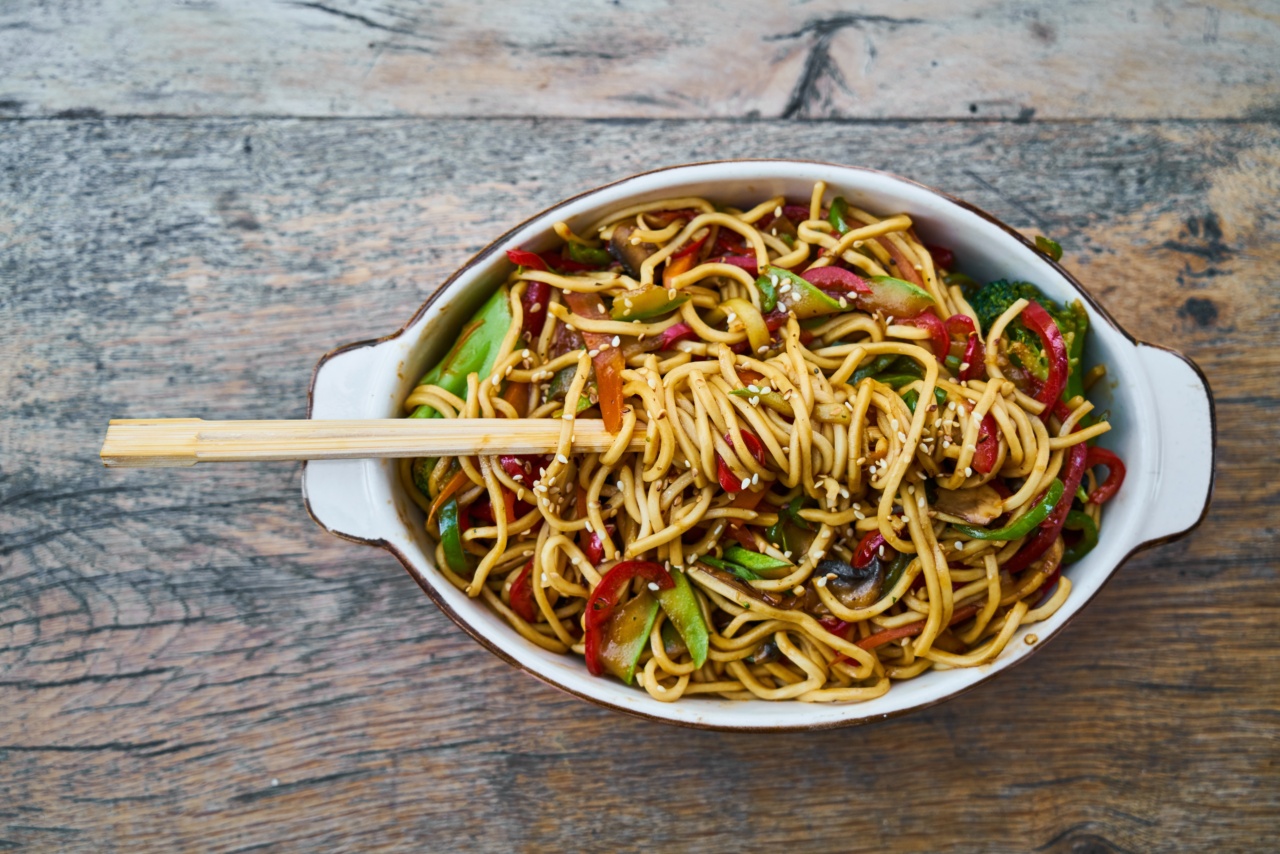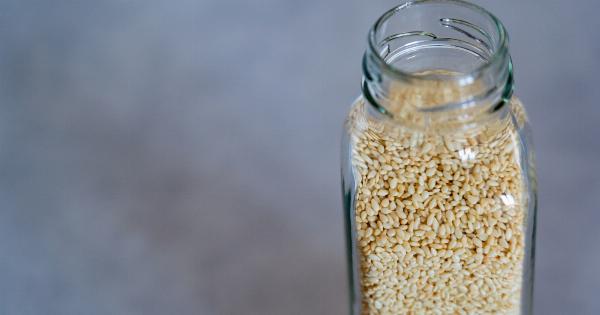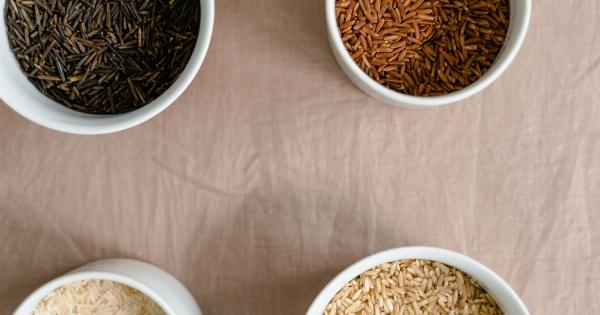The convenience of cooking food in a microwave oven is undeniable. However, what many fail to realize is that the rapid heat generated by a microwave can affect the nutritional content of certain foods.
Here are 30 healthy foods that lose nutrients when microwaved.
1. Broccoli
Broccoli is a great source of vitamins and minerals, such as vitamin C, vitamin K, and fiber. But microwaving it can destroy up to 97% of its antioxidants and vitamins. Instead of microwaving, consider steaming broccoli on the stove-top or in a steamer.
2. Garlic
Raw garlic has been shown to have anti-inflammatory and immune-boosting properties. However, studies have shown that microwaving garlic can destroy its active compounds.
3. Sweet Potatoes
Sweet potatoes are packed with vitamin A, potassium, and fiber. Microwaving sweet potatoes can cause them to lose up to 80% of their vitamin C content. To retain their nutritional value, try baking sweet potatoes in the oven instead.
4. Spinach
Spinach is a nutrient-dense vegetable, rich in vitamins K, A, and C, as well as iron, calcium, and antioxidants. However, microwaving spinach can lead to a significant loss of vitamins C and E.
5. Berries
Berries are a tasty way to get antioxidants, fiber, and vitamin C into your diet. Unfortunately, microwaving berries can destroy these nutrients. Instead of cooking them in the microwave, try adding them to oatmeal or yogurt for a healthy breakfast.
6. Asparagus
Asparagus is a good source of vitamins K, A, and C, as well as folate and fiber. However, microwaving asparagus can lead to a significant loss of its vitamins C and E. Roasting or steaming asparagus is a better option to retain their nutritional content.
7. Mushrooms
Mushrooms are low in calories and high in vitamins and minerals, such as vitamin D, potassium, and selenium. Microwaving mushrooms can cause them to lose their nutritional value and make them tough and rubbery.
8. Peppers
Peppers are a great source of vitamin C, which plays a key role in immune function and skin health. However, microwaving peppers can cause them to lose up to 67% of their vitamin C content.
9. Cabbage
Cabbage is a cruciferous vegetable, known for its anti-inflammatory and anti-cancer properties. Microwaving cabbage can cause it to lose up to 50% of its polyphenol content, which are compounds that have been shown to have health benefits.
10. Eggs
Eggs are a good source of protein and healthy fats. However, microwaving eggs can cause them to explode, making a mess and potentially causing burns. To cook eggs safely, use a stove-top or oven method.
11. Nuts
Nuts are a great source of healthy fats, fiber, and protein. However, microwaving nuts can cause them to become soggy and potentially lose their nutritional value. Instead of microwaving, try roasting nuts in the oven for a crunchy and nutritious snack.
12. Fish
Fish is a good source of omega-3 fatty acids, which have been shown to have anti-inflammatory and heart-healthy benefits. However, microwaving fish can cause it to become dry and potentially lose some of its nutritional content.
13. Kale
Kale is a nutrient-dense vegetable, rich in vitamins K, A, and C, as well as minerals such as calcium and iron. However, microwaving kale can cause it to lose up to 25% of its antioxidants.
14. Carrots
Carrots are a good source of vitamin A, which promotes good vision and immune function. However, microwaving carrots can cause them to lose up to 20% of their antioxidants.
15. Oatmeal
Oatmeal is a great source of fiber and complex carbohydrates, which can promote satiety and blood sugar control. However, microwaving oatmeal can cause it to become starchy and potentially lose some of its nutritional value.
16. Apples
Apples are a healthy snack, rich in fiber and antioxidants. However, microwaving apples can cause them to become mushy and lose some of their nutritional content. Instead of microwaving, try baking apples in the oven for a healthier dessert.
17. Tomatoes
Tomatoes are a good source of lycopene, an antioxidant that has been shown to have anti-cancer and heart-healthy benefits. However, microwaving tomatoes can cause them to lose up to 40% of their lycopene content.
18. Green Beans
Green beans are a good source of fiber and vitamin C. However, microwaving green beans can cause them to become mushy and lose some of their nutritional value.
19. Quinoa
Quinoa is a gluten-free grain, rich in protein, fiber, and minerals such as magnesium and phosphorus. However, microwaving quinoa can cause it to become soggy and potentially lose some of its nutritional value.
Cooking quinoa on the stove-top is a better option.
20. Avocado
Avocado is a healthy fat, rich in nutrients such as fiber, potassium, and vitamins C and K. However, microwaving avocado can cause it to become rubbery and lose some of its nutritional content.
21. Beets
Beets are a good source of fiber, folate, and antioxidants. However, microwaving beets can cause them to lose up to 25% of their folate content.
22. Brown Rice
Brown rice is a whole grain, packed with fiber, protein, and minerals such as magnesium and manganese. However, microwaving brown rice can cause it to become hard and potentially lose some of its nutritional value.
Cooking brown rice on the stove-top is a better option.
23. Chicken
Chicken is a good source of protein and healthy fats. However, microwaving chicken can cause it to become dry and potentially lose some of its nutritional content. To cook chicken safely, use a stove-top or oven method.
24. Peanut Butter
Peanut butter is a good source of healthy fats and protein. However, microwaving peanut butter can cause it to become runny and potentially lose some of its nutritional content.
25. Zucchini
Zucchini is a low-calorie vegetable, rich in vitamins and minerals such as vitamin C and potassium. However, microwaving zucchini can cause it to become soft and potentially lose some of its nutritional value.
26. Lentils
Lentils are a good source of protein and fiber, as well as minerals such as iron and potassium. However, microwaving lentils can cause them to become mushy and potentially lose some of their nutritional value.
Cooking lentils on the stove-top is a better option.
27. Tuna
Tuna is a good source of omega-3 fatty acids, which have been shown to have anti-inflammatory and heart-healthy benefits. However, microwaving tuna can cause it to become dry and potentially lose some of its nutritional content.
28. Beef
Beef is a good source of protein and nutrients such as iron and zinc. However, microwaving beef can cause it to become tough and potentially lose some of its nutritional content. To cook beef safely, use a stove-top or oven method.
29. Cauliflower
Cauliflower is a nutrient-dense vegetable, rich in vitamins C and K, fiber, and antioxidants. However, microwaving cauliflower can cause it to lose up to 15% of its antioxidants.
30. Milk
Milk is a good source of calcium, which is important for healthy bones and teeth. However, microwaving milk can cause it to lose some of its nutritional value and potentially create hot spots that can burn your tongue.
In conclusion, while the convenience of a microwave oven is hard to ignore, it is important to consider the nutritional effects on our food. To optimize the nutritional content of our meals, it is best to use other cooking methods whenever possible.




























